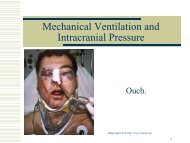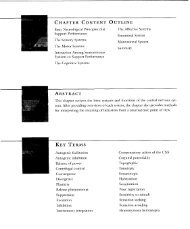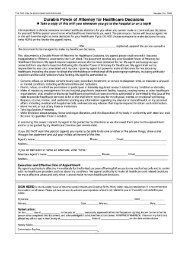Guidelines for the Diagnosis and Management of Asthma
Guidelines for the Diagnosis and Management of Asthma
Guidelines for the Diagnosis and Management of Asthma
Create successful ePaper yourself
Turn your PDF publications into a flip-book with our unique Google optimized e-Paper software.
<strong>of</strong> particular relevance (impairment, risk, or both)<br />
<strong>and</strong> clinician–patient preference.<br />
— For <strong>the</strong> impairment domain:<br />
• Children who have low lung function <strong>and</strong> >2<br />
days per week impairment may be better served<br />
by adding a LABA to a low dose <strong>of</strong> ICS (based<br />
on studies in older children <strong>and</strong> adults).<br />
• Increasing <strong>the</strong> dose <strong>of</strong> ICS to medium dose can<br />
improve symptoms <strong>and</strong> lung function in those<br />
children who have greater levels <strong>of</strong> impairment<br />
(based on studies in children).<br />
• One study in children suggests some benefit in<br />
<strong>the</strong> impairment domain with adding LTRA.<br />
— For <strong>the</strong> risk domain:<br />
• Studies have not demonstrated that adding<br />
LABA or LTRA reduces exacerbations in children.<br />
Adding LABA has <strong>the</strong> potential risk <strong>of</strong> rare<br />
life-threatening or fatal exacerbations.<br />
• Studies in older children <strong>and</strong> adults show that<br />
increasing <strong>the</strong> dose <strong>of</strong> ICS can reduce <strong>the</strong> risk <strong>of</strong><br />
exacerbations, but this may require up to a fourfold<br />
increase in <strong>the</strong> dose. This dose may increase<br />
<strong>the</strong> potential risk <strong>of</strong> systemic effects, although<br />
<strong>the</strong> risk is small within <strong>the</strong> medium-dose range.<br />
■ The need <strong>for</strong> step 4 care usually involves children<br />
who have a low level <strong>of</strong> lung function contributing<br />
to <strong>the</strong>ir impairment. The combination <strong>of</strong> ICS <strong>and</strong><br />
LABA is preferred, on <strong>the</strong> basis <strong>of</strong> studies in older<br />
children <strong>and</strong> adults.<br />
■ Be<strong>for</strong>e maintenance dose <strong>of</strong> oral corticosteroids is<br />
initiated in step 6, consider a 2-week course <strong>of</strong> oral<br />
corticosteroids to confirm clinical reversibility,<br />
measured by spirometry, <strong>and</strong> <strong>the</strong> possibility <strong>of</strong> an<br />
effective response to <strong>the</strong>rapy. If <strong>the</strong> response is poor,<br />
a careful review <strong>for</strong> o<strong>the</strong>r pulmonary conditions or<br />
comorbid conditions should be conducted to ensure<br />
that <strong>the</strong> primary diagnosis is severe asthma.<br />
Monitor asthma progression. Declines in lung function<br />
or repeated periods <strong>of</strong> worsening asthma<br />
impairment may indicate a progressive worsening<br />
<strong>of</strong> <strong>the</strong> underlying severity <strong>of</strong> asthma. Although <strong>the</strong>re<br />
is no indication that treatment alters <strong>the</strong> progression<br />
<strong>of</strong> <strong>the</strong> underlying disease in children, adjustments<br />
in treatment may be necessary to maintain asthma<br />
control.<br />
Steps <strong>for</strong> Youths 12 Years <strong>of</strong> Age <strong>and</strong> Adults<br />
See figure 16, “Stepwise Approach <strong>for</strong> Managing<br />
<strong>Asthma</strong> in Youths 12 Years <strong>of</strong> Age <strong>and</strong> Adults,” <strong>for</strong><br />
recommended treatment options in different steps<br />
<strong>and</strong> figures 18 <strong>and</strong> 19, <strong>for</strong> recommended medication<br />
dosages <strong>for</strong> youths 12 years <strong>of</strong> age <strong>and</strong> adults.<br />
Special considerations <strong>for</strong> this age group include<br />
<strong>the</strong> following:<br />
For youths:<br />
■ Involve adolescents in <strong>the</strong> development <strong>of</strong> <strong>the</strong>ir<br />
written asthma action plans <strong>and</strong> reviewing <strong>the</strong>ir<br />
adherence.<br />
■ Encourage students to take a copy <strong>of</strong> <strong>the</strong>ir plan<br />
to school, after school programs, <strong>and</strong> camps.<br />
■ Encourage adolescents to be physically active.<br />
For older adults:<br />
■ Consider a short course <strong>of</strong> oral systemic<br />
corticosteroids to establish reversibility <strong>and</strong> <strong>the</strong><br />
extent <strong>of</strong> possible benefit from asthma treatment.<br />
Chronic bronchitis <strong>and</strong> emphysema may coexist<br />
with asthma.<br />
■ Adjust medications as necessary to address<br />
coexisting medical conditions. For example,<br />
consider calcium <strong>and</strong> vitamin D supplements <strong>for</strong><br />
patients who take ICS <strong>and</strong> have risk factors <strong>for</strong><br />
osteoporosis. Consider increased sensitivity to side<br />
effects <strong>of</strong> bronchodilators, especially tremor <strong>and</strong><br />
tachycardia with increasing age, <strong>and</strong> increased<br />
possibilities <strong>for</strong> drug interactions with <strong>the</strong>ophylline.<br />
Consider also that NSAIDs prescribed <strong>for</strong> arthritis<br />
<strong>and</strong> <strong>the</strong> beta-blockers prescribed <strong>for</strong> hypertension<br />
or glaucoma may exacerbate asthma.<br />
■ Review <strong>the</strong> patient’s technique <strong>and</strong> adherence<br />
in using medications, <strong>and</strong> make necessary<br />
adjustments. Physical or cognitive impairments<br />
may make proper technique difficult.<br />
Consider <strong>the</strong> following when selecting treatment<br />
options:<br />
■ Recommended treatment <strong>for</strong> step 3 weighs <strong>the</strong><br />
high-quality evidence demonstrating <strong>the</strong> benefits <strong>of</strong><br />
adding LABA to low-dose ICS against <strong>the</strong> potential<br />
risk <strong>of</strong> rare life-threatening or fatal exacerbations<br />
with <strong>the</strong> use <strong>of</strong> LABA. The selection will depend<br />
on <strong>the</strong> domain <strong>of</strong> particular relevance (impairment,<br />
risk, or both) <strong>and</strong> clinician–patient preference.<br />
Managing <strong>Asthma</strong> Long Term<br />
37





